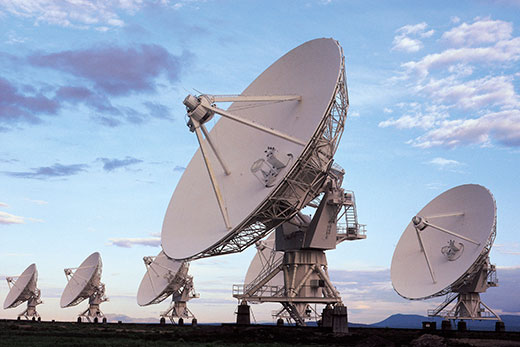Six satellite dishes are to be built south of Rotorua during the next three years as part of a new trans-Tasman contract to provide a major boost to NZ search and rescue capability.
Satellite dishes. Photo: file.
The New Zealand site, mid-way between Taupo and Rotorua, is expected to be completed by the end of 2015, commissioned towards the end of 2016 and operational by 2017.
The ground station is part of a recently-signed agreement between Maritime New Zealand and the Australian Maritime Safety Authority, aimed at providing a major boost to search and rescue in the region.
Two new satellite receiving stations are to be built to pick up signals from Medium Earth Orbit Search and Rescue satellites.
One is near Taupo and the other is in Western Australia, along with a new mission control centre in Canberra.
MEOSAR satellites, which orbit about 20,000km above the Earth, are replacing the current Low Earth Orbit Search and Rescue satellites, which orbit between 800-1000km, and are being phased out during the next four years.
There are currently 16 MEOSAR satellites orbiting Earth, compared to five LEOSAR satellites.
Beacon signals will be received more quickly and beacon locations identified with greater accuracy.
This will further improve during the next five years as the number of MEOSAR satellites is expected to increase to more than 50, ensuring several satellites will be in view at all times from anywhere on Earth.
Existing Emergency Position-Indicating Radio Beacons, of which there are 46,000 registered in New Zealand, will not be affected by the change.
The contract with McMurdo Group's Techno-Sciences Inc will improve the way emergency distress beacon signals are picked up and passed on to rescue authorities.
The New Zealand contract is made up of $7.2m for construction of the receiving station and $5.5m in operating costs during the next 11 years.
Emergency beacon signals will pass through the MEOSAR satellites to the two ground stations, be processed through the Canberra mission control centre, and relayed to the Rescue Coordination Centre New Zealand to trigger SAR operations.
The RCCNZ, part of MNZ, responds to about 550 beacon alerts each year.
MNZ director Keith Manch says the joint investment by New Zealand and Australia in the MEOSAR project is another example of the close cooperation between our two countries in what is a vital area of operations.
'The change is necessary because without a medium earth orbiting receiving station New Zealand would effectively lose its ability to respond to distress beacons once the LEOSAR satellites are phased out. But the change brings with it significant improvements to search and rescue capability.”
AMSA chief executive officer Mick Kinley says Australia and New Zealand's ground stations will work cooperatively to achieve overlapping coverage of the two countries' search and rescue regions.
'This offers a high degree of resilience in the event of a system outage that would be expensive for either country to achieve alone,” says Mick.
'AMSA is pleased to continue this collaborative regional approach with New Zealand.”
The New Zealand's search and rescue region extends from just below the equator to the South Pole, half way across the Tasman, and east to half way to South America.
The global search and rescue satellite system is managed by the International Cospas-Sarsat organisation.
A consortium of Russia, the United States, Canada and France formed the organisation in 1982. Since then 41 participants – including New Zealand – have joined to provide satellite tracking equipment.
Cospas-Sarsat sets standards for beacons, satellite equipment, and ground stations enabling a truly global approach to search and rescue.
The current global search and rescue satellite system makes use of two types of satellite: LEOSAR satellites and geostationary, or GEO satellites that are stationary above the equator.
Because of New Zealand's distance from the equator, the GEO satellites are low on the horizon, which can limit their line-of-sight visibility, particularly in mountainous terrain.
That makes LEO satellites important, but these are limited in number and not always over New Zealand, so there can be delays between a beacon activation and its detection by a LEO satellite.



0 comments
Leave a Comment
You must be logged in to make a comment.